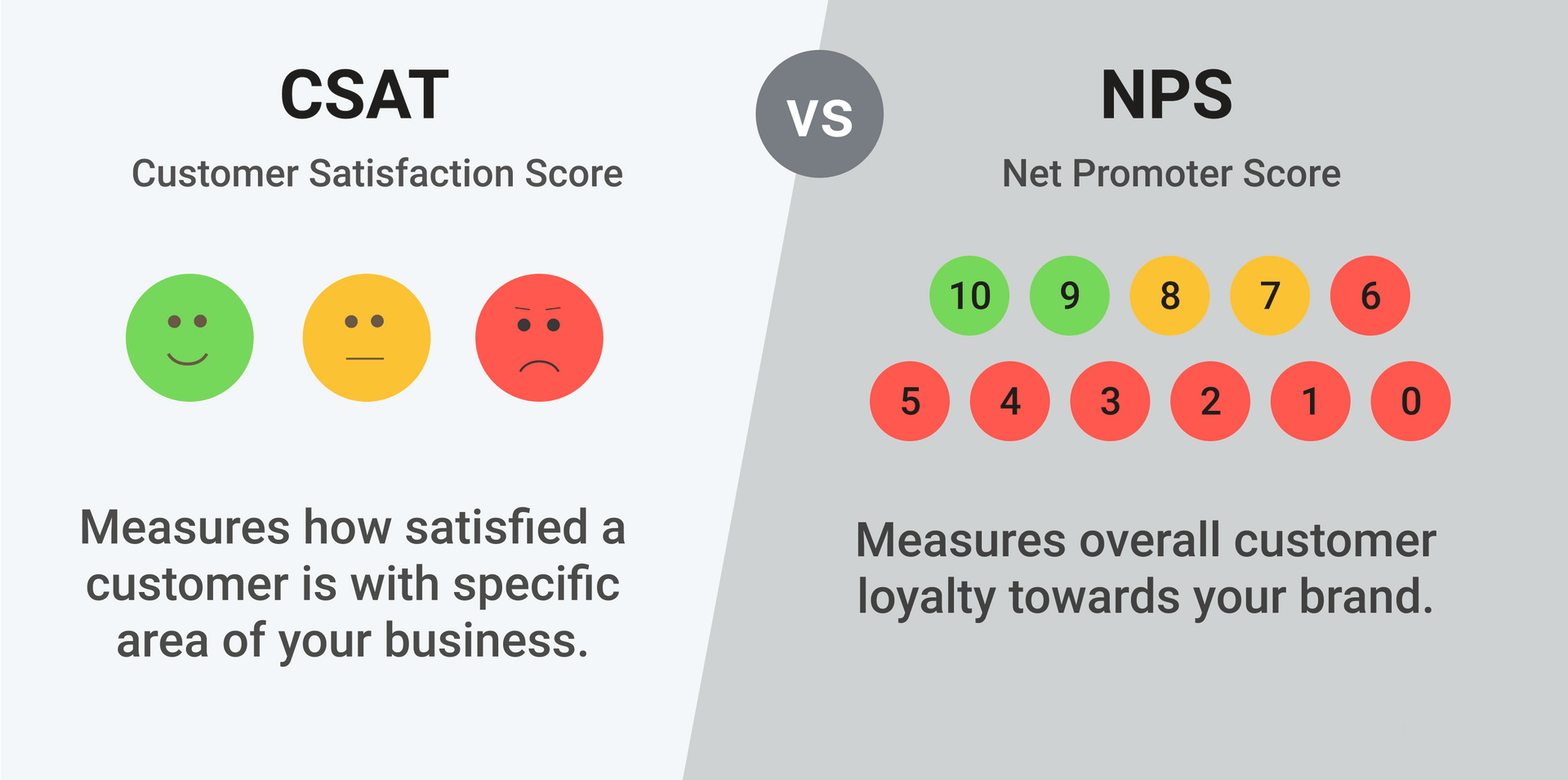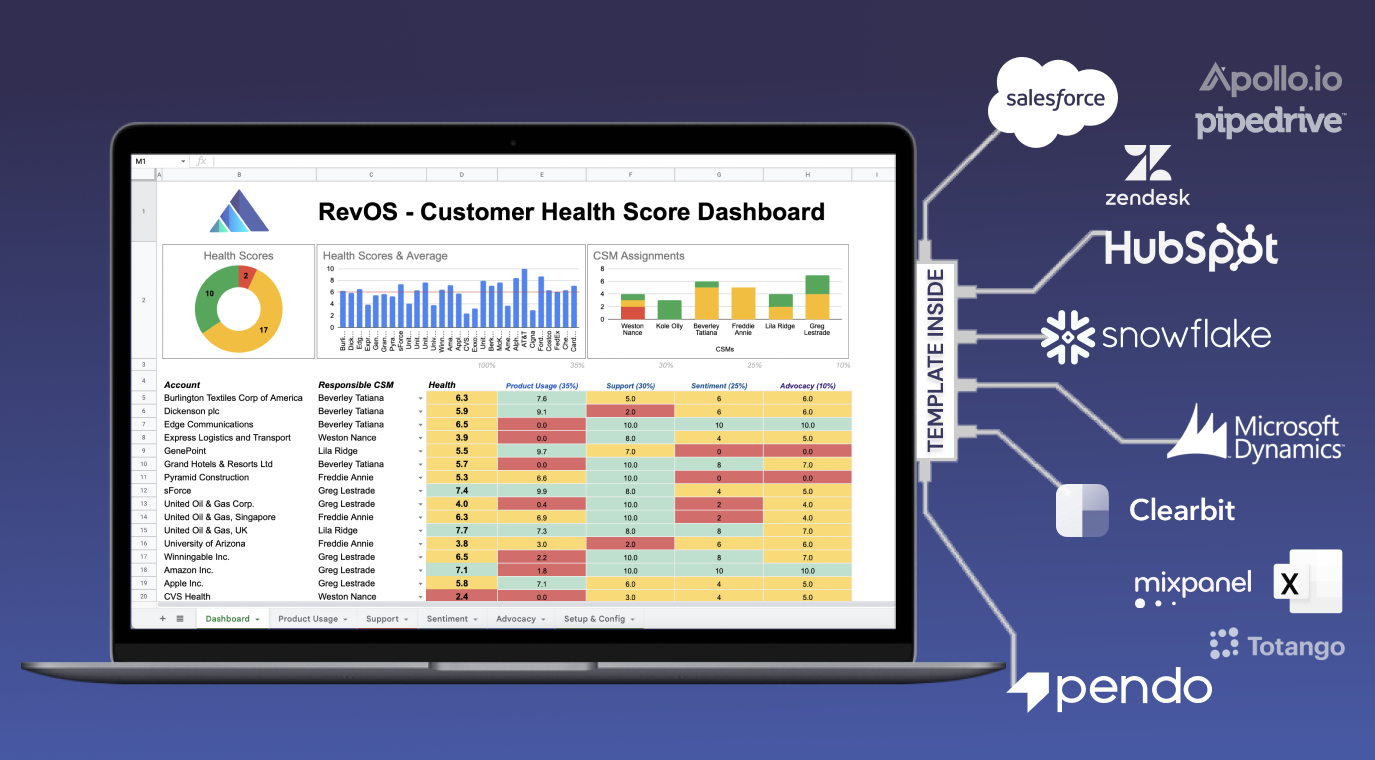Importance of Customer Satisfaction Score in Your Customer Success Strategy
 Renat Zubayrov
Renat ZubayrovThe CSAT (Customer Satisfaction) score is a commonly used metric for measuring customer satisfaction with a product or service. We will consider the main metrics and best practices of CSAT, in our second article, as a part of a series, will see the importance of Customer Satisfaction for a high customer retention rate and reducing customer churn for successful companies.
Customer Satisfaction is typically calculated by surveying customers and asking them to rate their satisfaction on a scale, such as a 5-point scale (from "very unsatisfied" to "very satisfied"). The scores are then averaged to give an overall CSAT score. A high CSAT score indicates that customers are generally satisfied with the product or service, while a low score indicates that there are areas that need improvement. This metric can be used as a part of a customer health score, which is a composite score that helps a company measure and track the overall well-being of its customer base.
When we talk about measuring customer experience and satisfaction, three metrics inevitably come up as the ones to use: Customer Satisfaction Score (CSAT) vs Net Promoter Score (NPS) vs Customer Effort Score (CES). As we discussed in our first article Net Promoter Score (NPS) is a measure of long-term happiness or customer loyalty and the scale used is 0-10, 10 indicating the highest and 0 indicating the lowest. And CSAT is usually measured on a 5-scale using the below answer examples:
1. Very Unsatisfied / Very Unhappy / Very Bad
2. Unsatisfied / Unhappy / Bad
3. Neutral
4. Satisfied / Happy / Good
5. Very Satisfied / Very Happy/ Very Good

Customer Health Score is an important concept that should help customer success and sales to prioritize customer outreach and communication. It’s simple to grasp but complex to calculate. We created a powerful ready-to-use instrument Customer Health Score Template for calculating multiple KPIs and metrics that aligned to one customer healthcare formula. It is based on the weighted average that gives the value to make it easy to grasp and understand for future actions.
Download a Customer Health Score Template with a video tutorial on how to set up your own scoreboard with an explanation of various aspects of scoring and real case studies from our clients.
Use a coupon LINKEDIN50 and get a 50% off a regular price! Don't wait, make the investment in your professional development today and see the results for yourself! Keep your skills on the leading edge.

Benchmarks
A good customer satisfaction score is one that indicates a high level of customer satisfaction with a product or service. Generally, a score of 80% or higher is considered good for CSAT score. However, it's important to keep in mind that the specific definition of a "good" score will depend on the industry, company, and target audience.
Here are some key factors that should be considered when determining a good customer satisfaction score:
- Industry benchmarks: It's important to compare your score to industry benchmarks to see how it stacks up against your competitors.
- Target audience: The score should be compared to the target audience, for example, a retail store for high-end luxury products could have a lower CSAT score than a retail store for everyday products, as customers have different expectations.
- Company goals: The score should be aligned with the company's goals and objectives. For example, if a company aims to have a high level of customer retention, a high score is expected.
- Customer feedback: The score should be considered in the context of customer feedback to understand the reasons behind it. For example, a low score could be due to a specific issue that the company can address.
- Historical data: The score should be analyzed over time to track changes and identify any trends.
Challenges
There are several main challenges in measuring and controlling the CSAT score for customer health scoring:
- Sample bias: The sample of customers surveyed may not be representative of the entire customer base, which can skew the CSAT score.
- Response bias: Customers may not be motivated to respond to the survey or may not be honest in their responses, which can also skew the score.
- Difficulty in tracking changes: It can be difficult to track changes in CSAT scores over time and to determine the cause of any changes.
- Difficulty in understanding customer feedback: CSAT scores alone do not provide a detailed understanding of why customers are dissatisfied or satisfied, so it can be difficult to identify specific areas that need improvement.
- Difficulty in Actioning: Once the score is identified, it is difficult to know which actions to take to improve the score, as it can be hard to determine the root causes of customer dissatisfaction.
Alternatives
There are several alternatives to the CSAT score that can be used to measure customer satisfaction, including:
- Net Promoter Score (NPS): This metric measures customer loyalty by asking customers how likely they are to recommend a product or service to others on a scale of 0 to 10.
- Customer Effort Score (CES): This metric measures the ease of the customer experience by asking customers how much effort they had to exert to get their issue resolved.
- License Utilisation: This metric refers to the extent to which a customer is using the licenses they have purchased from a company, it can be a leading indicator of customer satisfaction (or challenges with it).
Unlock the key to improving your customer success strategy
As we've seen, customer satisfaction is a critical factor in achieving a successful customer success strategy. By tracking and analyzing customer health scores that include customer satisfaction, businesses can gain a deeper understanding of their customers and make data-driven decisions to improve customer engagement and retention.
Create a piece of your customer success strategy in our Template and enroll it with our holistic Customer Health Score Course (coupon for our readers -50% for the course - LINKEDIN50).
Don't miss this opportunity to take your career to the next level.
Read more about revenue operations, growth strategies, and metrics in our blog and follow us on LinkedIn, Youtube, and Facebook.
← Go back to blog